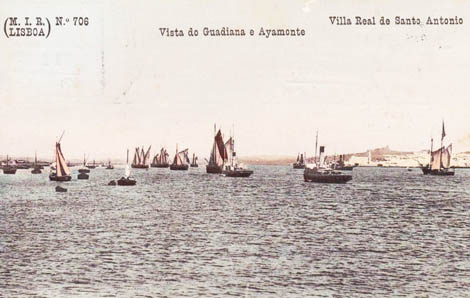 The third day of the presidential visit to the Algarve, February 17, 1932, began with a visit to the works at the port of Vila Real de Santo António. Remember that the Head of State and the other delegation had stayed overnight at the Hotel Guadiana, from where they left at around 10:00 am.
The third day of the presidential visit to the Algarve, February 17, 1932, began with a visit to the works at the port of Vila Real de Santo António. Remember that the Head of State and the other delegation had stayed overnight at the Hotel Guadiana, from where they left at around 10:00 am.
Then, and according to “Diário de Notícias”, a “long line of cars with the authorities and representatives of local authorities was formed, heading towards the port, whose works were meticulously visited”.
The head of the Maritime Department and the engineering director of the works presented explanations “about the town's aspirations, concerning its beautiful port opposite Ayamonte”. During which those present admired the "wonderful panorama."
The tour continued towards São Brás de Alportel, encountering "on the roads, many people greeted the Head of State, flowers being thrown, by children and by some ladies on their car."
Passing through Tavira, it was the procession awaited at Praça da República, by the local authorities, civil and military, and many people. In S. Brás, where the president was going to visit the Sanatório Ferroviário, the delegation was received, by "a large crowd and more than seven hundred school children, who cheered the Head of State, with many rockets being launched and flowers thrown on the presidential car" .
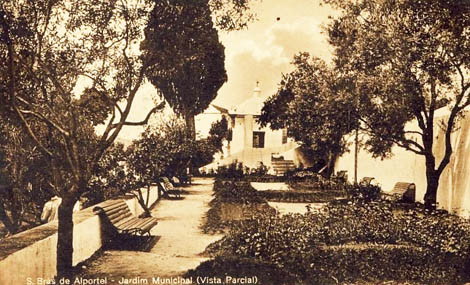 General Carmona then visited the sanatorium for tuberculous railway workers. The establishment was headed by Dr. Alberto Sousa, who, according to the DN, "thanked the honorable visit, praising the Government's interest in the assistance works, which well demonstrate his interest in getting closer to the people." He also recalled that the capacity was only for twenty patients, with the rest of the construction still to be concluded.
General Carmona then visited the sanatorium for tuberculous railway workers. The establishment was headed by Dr. Alberto Sousa, who, according to the DN, "thanked the honorable visit, praising the Government's interest in the assistance works, which well demonstrate his interest in getting closer to the people." He also recalled that the capacity was only for twenty patients, with the rest of the construction still to be concluded.
General Vasconcelos Porto spoke, on behalf of the benefactors of the sanatorium's protectors, and finally the President of the Republic. The head of state thanked the statements made to him and congratulated himself on the beneficial action carried out there.
The entourage then toured the premises, as well as the rest gallery. After the visit, the procession left for Loulé, having crossed the village of São Brás amidst “enthusiastic demonstrations”.
Loulé had a festive air, with decked windows, flagpoles in the streets, and immense people. The DN described the entrance to the village in detail: “huge crowd and hundreds of school children cheered the welcome. The square in front of the City Hall was a veritable sea of people, assaulting the presidential car and forcing the Head of State to cross the town on foot, amidst delirious cheers for the Fatherland, the Republic and the Dictatorship. Music bands played the national anthem, and at all times banged mortars. Mr. General Carmona, on reaching the end of the village, thanked the people, climbing back into his car”.
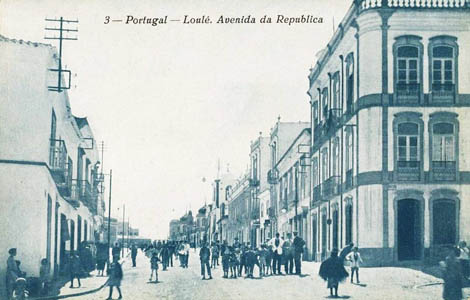 The reception was so effusive that, for “O Século”, “The police found themselves in trouble to keep the people in the necessary composure.”
The reception was so effusive that, for “O Século”, “The police found themselves in trouble to keep the people in the necessary composure.”
The entourage headed for Portimão, via Boliqueime, Guia, Alcantarilha, Lagoa and Estômbar.
The procession passed through Guia at 13:20 pm. There, President Carmona was expected, “along the national road, by the administrative commission of the Parish Council, councilor, official teacher, with his students and many people, having taken to the air many rockets at the same time as the school children launched flowers on the presidential car”, as reported by “The Century”.
The euphoria among the little ones will have been excessive, in such a way that a 9-year-old child crossed the road, having been run over by the car where the minister of the Navy was following.
The boy was “immediately taken to Alcantarilha, where several injuries he received on the head were thought to be non-serious, preventing him, however, from providing the services entrusted to him, in a house where they gave him to eat."
Times were extremely difficult and the boy's mother, who was “very poor, has nothing to support him as long as he is sick and doesn't get a job again”, soon asked the correspondent of “O Século”, “an echo of her desire that they help her until the little one recovers.”
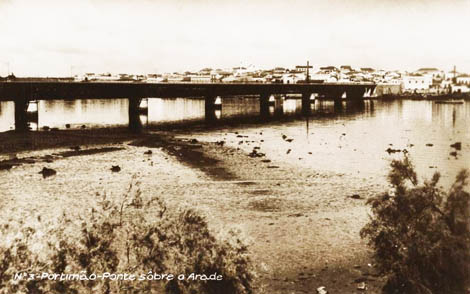 In Alcantarilha, the procession was greeted by "teachers and students from official schools." In Lagoa, he was the head of State “awaited, at the Town Hall, by school children and their teachers, and several «Vivas» were built there.” As indicated by the administrator of the Lagoense Council, the president “grained a medal to Mr. Joaquim Sousa Neves.”
In Alcantarilha, the procession was greeted by "teachers and students from official schools." In Lagoa, he was the head of State “awaited, at the Town Hall, by school children and their teachers, and several «Vivas» were built there.” As indicated by the administrator of the Lagoense Council, the president “grained a medal to Mr. Joaquim Sousa Neves.”
The village of Estômbar also took to the streets to cheer the head of state. In this locality, distinguished excursionists, "teachers and students of the schools, local authorities, president of the Parish Council and a great number of people awaited, having heard many "alive", while many dozens of rockets crackled in the air."
The procession was now approaching its destination, and “by 14 hours, the breathtaking panorama of Portimão could be seen”. The city had a festive look, “being flagged profusely. The bells tolled and, in the port, the sirens of the steamers, also flagged, could be heard.”
Just as in other parts of the Algarve, rockets immediately went up into the air, while the President of the Republic and other entourage triumphantly entered the city.
(Go on)
Read the 1st part of this article here: Read the 2st part of this article here: Read the 3st part of this article here: Read the 4st part of this article here: Read the 5st part of this article here: Read the 6st part of this article here: Read the 7st part of this article here
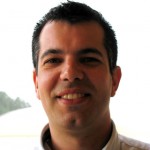
Author Aurélio Nuno Cabrita is an environmental engineer and researcher of local and regional history


















Comments